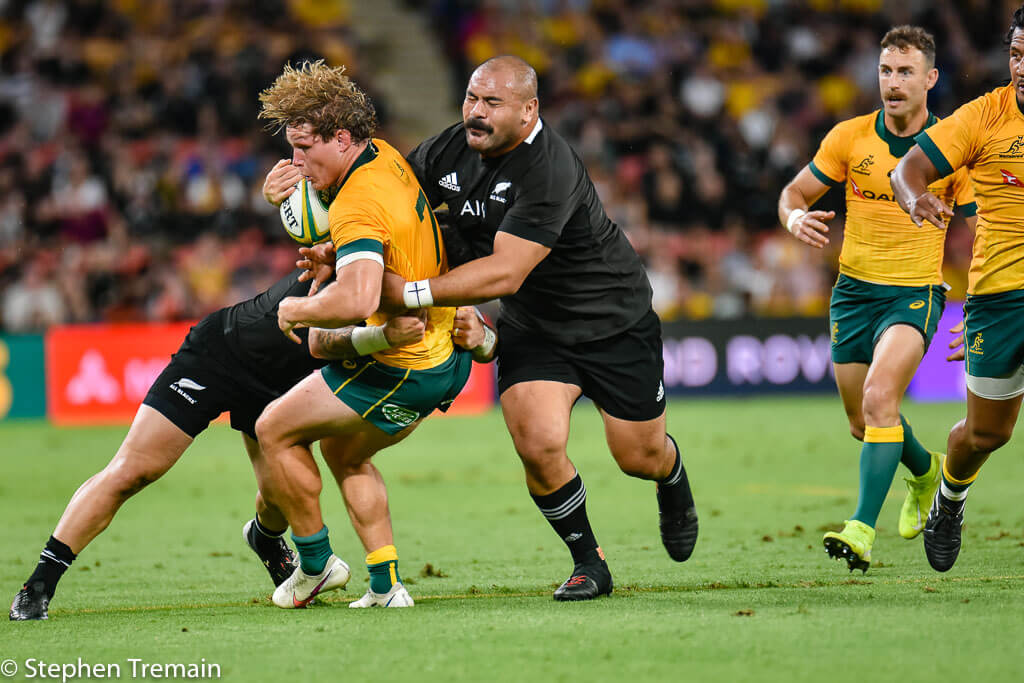Longtime rugby agitator Roy Masters may love putting the boot into the game they play from heaven – but sadly, he’s often right.
Speaking about the Wallabies try-less test match against Argentina over the weekend, Masters implied a free to air audience wouldn’t tolerate the constant stoppages in Rugby, and changes to the laws would be needed, similar to the NRL’s “six-again” laws implemented this year.
The problem, Masters says, is that around 40 stuffy old men at World Rugby headquarters Dublin, Ireland, have the power to change Rugby’s laws, and are often the least willing to do so.
While a roadblock, there’s no doubt a couple of simple measures, acceptable to almost every stakeholder, could make Rugby far more attractive to watch – which is crucial as the game prepares to launch itself on Channel 9.
The greatest strength of the “six again” rule in Rugby League is its simplicity. It’s not a radical overhaul. The rule simply restarts the tackle count if a penalty is given away, rather than halting proceedings for a penalty.
The result is that teams who commit wrestling style slow downs of play the balls or are offside when a team is red hot on attack pay the ultimate price – six more tackles of defending. The incentive: play by the rules, or else.
This procedural change has sped up Rugby League so much it’s threatening to change the structural meta-game. Players are running more, the ball is in play more, and they’re getting tired. Anecdotally, it has seen a reduction in big hits. Ultimately, it could even see players forced to become a bit smaller to cope.
Rugby should take heed and implement some simple rule changes of its own – 15 second shot clocks for scrums, 60 seconds for penalty goals, and some reductions to the substitutions bench.
In the old days, in fact, as recently as around 2003, players took almost no time to set for scrums. Then, some Northern Hemisphere teams realised the tactical advantage of slowing down the scrum. It allows big, physical teams to slow down, have a breather, and make life hell for smaller teams who want to move the ball around.
Combine this with the farce of drinks breaks and test match Rugby has an embarrassingly low ball in play time compared to Rugby League.
Huge props can dominate the physical contest at scrums and rucks. The massive collisions have made fast, jinking players of the David Campese mold extinct – they were simply smashed into touch, and out of the starting lineups of teams the world over.

The result is interesting enough if you love rugby. It’s a grand game of brutal chess. To the uninitiated – it’s dross. The big collisions make people drop the ball far more, leading to more minute long stoppages waiting for a scrum to set (and potentially reset). This rewards intense physicality at the expense of guile and skill.
A 15 second scrum clock would get the game moving. It also allows the viewer not to be taunted by minute long stoppages from basic errors. With the ball back in play, and the forwards running around, players start getting tired and missing tackles, opening things up.
The public is more than willing to forgive a complex rule book, provided decisions are made and play resumes. What they won’t forgive is constant stoppages which take forever to restart.
Another area which could be reformed in both Rugby Union and Rugby League is the incredibly liberal substitutions bench. Having eight replacements allows both props to be subbed off – in effect granting a get out of jail free card for having large props who are unfit. Rugby League likewise has the interchange which has a similar effect.
Instead of running into open space at the end of thrilling games, speedy backs find themselves running into fresh 120 kilogram props, who’ve just come onto the field.
The 8 player bench should remain – but teams should only be able to use three of these players, with the rest able to come on if there’s an injury. This will see games break open with thrilling late stage line-breaks, adding to the drama.
These changes should also be considered for another reason – safety. Having huge props smash people all game isn’t just frustrating – it’s dangerous. Players are getting concussed from these collisions at frightening rates. When the next generation of players gets older, it’s terrifying to think what will happen to many.
Speeding up the game and making players fitter will make them need to be smaller. This will moderate the collision, while keeping its core elements. It will make the game prettier, and safer. Rugby AU should consider adopting these simple procedural law changes.


